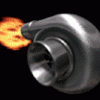Boost limit(stock cooler and turbo)
Announcements
-
Similar Content
-
Latest Posts
-
I dunno about that as a blanket statement. Pitwork is Nissan's "Nissan genuine" thing, and for stuff like timing belts, I have found them to be excellent. Of course, for things like oil filters, you always use proper trusted brands anyway, not whatever the OEM has taken to using.
-
Ahhhh... If you were putting 12V to the led in there, that's likely made it very unhappy. Chances are how you put power, was 12V across an LED that's meant to only have about 20mA through it at peak, and a forward voltage of about 1.8 to 2.4 volts. That circuit is likely only a 3V3 circuit, and will have a resistor in series with the led too. That's my guesstimate on that light, without having touched one.
-
By Murray_Calavera · Posted
Another vote for installing them and see how you go. I mean, you already own them, why would you not fit them? -
Basically, if there is a part# on the nissan catalogue, it is a genuine part. There is a thing called "new old stock" which is stuff made years ago but never sold (or landfilled), but it is super hit and miss what you can buy. Other than some expensive Nismo stuff there is nothing new being made that suits these cars. The only time to be a little careful is (mostly in the US I think, but maybe Japan too), Nissan started rebranding some cheap crap maintenance parts like oil filters as "Pitworks"; stay away from them, if you are buying cheap just buy whatever the local car parts shop carries The three part numbers have an explanation on Amayama: 0V005 is auto, base style 0V015 is manual 0V505 is auto, hectic momo branded ones, maximum F&F points there!
-






Recommended Posts
Create an account or sign in to comment
You need to be a member in order to leave a comment
Create an account
Sign up for a new account in our community. It's easy!
Register a new accountSign in
Already have an account? Sign in here.
Sign In Now